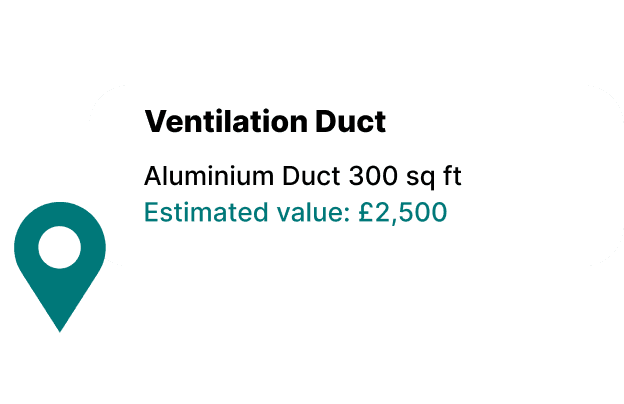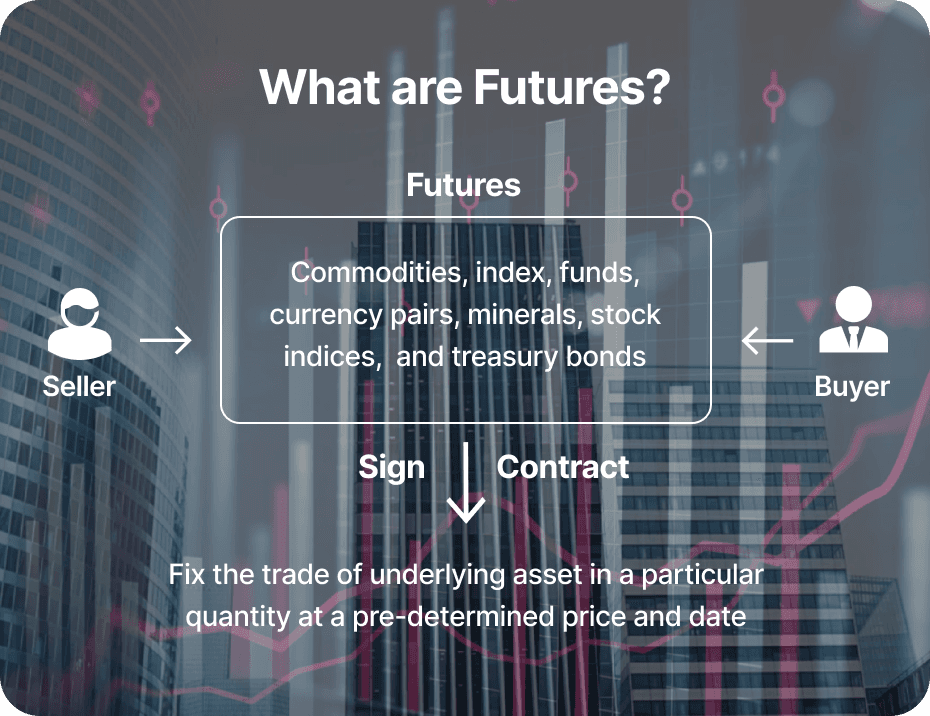
Unlock the value of your buildings’ materials.
Meet your SDGs through the circular economy.
The built environment’s solution to combat the climate crisis.
Unlock the value of your buildings’ materials.
Meet your SDGs through the circular economy.
The built environment’s solution to combat the climate crisis.
Unlock the value of your buildings’ materials.
Meet your SDGs through the circular economy.
The built environment’s solution to combat the climate crisis.
Unlock the value of your buildings’ materials.
Meet your SDGs through the circular economy.
The built environment’s solution to combat the climate crisis.
Unlock the value of your buildings’ materials.
Meet your SDGs through the circular economy.
The built environment’s solution to combat the climate crisis.
Unlock the value of your buildings’ materials.
Meet your SDGs through the circular economy.
The built environment’s solution to combat the climate crisis.
Unlock the value of your buildings’ materials.
Meet your SDGs through the circular economy.
The built environment’s solution to combat the climate crisis.
Unlock the value of your buildings’ materials.
Meet your SDGs through the circular economy.
The built environment’s solution to combat the climate crisis.

Unlock the value of your buildings’ materials.
Meet your SDGs through the circular economy.
The built environment’s solution to combat the climate crisis.
Unlock the value of your buildings’ materials.
Meet your SDGs through the circular economy.
The built environment’s solution to combat the climate crisis.
Unlock the value of your buildings’ materials.
Meet your SDGs through the circular economy.
The built environment’s solution to combat the climate crisis.
Unlock the value of your buildings’ materials.
Meet your SDGs through the circular economy.
The built environment’s solution to combat the climate crisis.

Transforming the way we
build our future.
While much focus within the built environment has been around operational improvements and energy performance, the real challenge of decarbonising our building stock is embodied within the materials, and the way we use them.
The carbon clock is ticking, and we need to make better use of the materials and products we already have in our buildings.
11%
Virgin building materials share of global CO2 emissions.
50%
Of global waste is produced each year by the construction industry.
1%
The percentage of materials which are reused from a standard demolition site.
50%
Primary resources consumed by this sector.
But there is opportunity for this sector to be a force for good: the circular economy has the potential to reduce global CO2 emissions from building materials by 38% in 2050, by reducing demand for materials such as steel, aluminium, cement, glass and plastics.
Transforming the way we
build our future.
While much focus within the built environment has been around operational improvements and energy performance, the real challenge of decarbonising our building stock is embodied within the materials, and the way we use them.
The carbon clock is ticking, and we need to make better use of the materials and products we already have in our buildings.
Transforming the way we
build our future.
While much focus within the built environment has been around operational improvements and energy performance, the real challenge of decarbonising our building stock is embodied within the materials, and the way we use them.
The carbon clock is ticking, and we need to make better use of the materials and products we already have in our buildings.
But there is opportunity for this sector to be a force for good: the circular economy has the potential to reduce global CO2 emissions from building materials by 38% in 2050, by reducing demand for materials such as steel, aluminium, cement, glass and plastics.
40% of global CO² emissions
Come from the construction and building industry. The built environment has a profound impact on our planet
Climate Crisis
Market Inefficiency & Fragmentation
Construction supply chains are fragmented, inefficient and regularly face material shortages and price volatility.
Supply Chain Instability
Market Inefficiency & Fragmentation
Construction supply chains are fragmented, inefficient and regularly face material shortages and price volatility.
Supply Chain Instability
Despite these staggering statistics, less than 1% of a building's materials are reused.
At Circotrade, we recognize that the materials in existing buildings are full of untapped potential, often overlooked in traditional industry practices. Our mission is to change this narrative by driving the reuse of building materials, reducing waste, and significantly contributing to the decarbonization of the built environment.
11%
Virgin building materials share of global CO2 emissions.
50%
Of global waste is produced each year by the construction industry.
1%
The percentage of materials which are reused from a standard demolition site.
50%
Primary resources consumed by this sector.
But there is opportunity for this sector to be a force for good: the circular economy has the potential to reduce global CO2 emissions from building materials by 38% in 2050, by reducing demand for materials such as steel, aluminium, cement, glass and plastics.
Transforming the way we
build our future.
While much focus within the built environment has been around operational improvements and energy performance, the real challenge of decarbonising our building stock is embodied within the materials, and the way we use them.
The carbon clock is ticking, and we need to make better use of the materials and products we already have in our buildings.
But there is opportunity for this sector to be a force for good: the circular economy has the potential to reduce global CO2 emissions from building materials by 38% in 2050, by reducing demand for materials such as steel, aluminium, cement, glass and plastics.
11%
Virgin building materials share of global CO2 emissions.
50%
Of global waste is produced each year by the construction industry.
1%
The percentage of materials which are reused from a standard demolition site.
50%
Primary resources consumed by this sector.

Transforming the way we
build our future.
While much focus within the built environment has been around operational improvements and energy performance, the real challenge of decarbonising our building stock is embodied within the materials, and the way we use them.
The carbon clock is ticking, and we need to make better use of the materials and products we already have in our buildings.
11%
Virgin building materials share of global CO2 emissions.
50%
Of global waste is produced each year by the construction industry.
1%
The percentage of materials which are reused from a standard demolition site.
50%
Primary resources consumed by this sector.
But there is opportunity for this sector to be a force for good: the circular economy has the potential to reduce global CO2 emissions from building materials by 38% in 2050, by reducing demand for materials such as steel, aluminium, cement, glass and plastics.
Transforming the way we
build our future.
While much focus within the built environment has been around operational improvements and energy performance, the real challenge of decarbonising our building stock is embodied within the materials, and the way we use them.
The carbon clock is ticking, and we need to make better use of the materials and products we already have in our buildings.
Transforming the way we
build our future.
While much focus within the built environment has been around operational improvements and energy performance, the real challenge of decarbonising our building stock is embodied within the materials, and the way we use them.
The carbon clock is ticking, and we need to make better use of the materials and products we already have in our buildings.
But there is opportunity for this sector to be a force for good: the circular economy has the potential to reduce global CO2 emissions from building materials by 38% in 2050, by reducing demand for materials such as steel, aluminium, cement, glass and plastics.
40% of global CO² emissions
Come from the construction and building industry. The built environment has a profound impact on our planet
Climate Crisis
Market Inefficiency & Fragmentation
Construction supply chains are fragmented, inefficient and regularly face material shortages and price volatility.
Supply Chain Instability
Market Inefficiency & Fragmentation
Construction supply chains are fragmented, inefficient and regularly face material shortages and price volatility.
Supply Chain Instability
Despite these staggering statistics, less than 1% of a building's materials are reused.
At Circotrade, we recognize that the materials in existing buildings are full of untapped potential, often overlooked in traditional industry practices. Our mission is to change this narrative by driving the reuse of building materials, reducing waste, and significantly contributing to the decarbonization of the built environment.
11%
Virgin building materials share of global CO2 emissions.
50%
Of global waste is produced each year by the construction industry.
1%
The percentage of materials which are reused from a standard demolition site.
50%
Primary resources consumed by this sector.
But there is opportunity for this sector to be a force for good: the circular economy has the potential to reduce global CO2 emissions from building materials by 38% in 2050, by reducing demand for materials such as steel, aluminium, cement, glass and plastics.
Transforming the way we
build our future.
While much focus within the built environment has been around operational improvements and energy performance, the real challenge of decarbonising our building stock is embodied within the materials, and the way we use them.
The carbon clock is ticking, and we need to make better use of the materials and products we already have in our buildings.
But there is opportunity for this sector to be a force for good: the circular economy has the potential to reduce global CO2 emissions from building materials by 38% in 2050, by reducing demand for materials such as steel, aluminium, cement, glass and plastics.
11%
Virgin building materials share of global CO2 emissions.
50%
Of global waste is produced each year by the construction industry.
1%
The percentage of materials which are reused from a standard demolition site.
50%
Primary resources consumed by this sector.

Transforming the way we
build our future.
While much focus within the built environment has been around operational improvements and energy performance, the real challenge of decarbonising our building stock is embodied within the materials, and the way we use them.
The carbon clock is ticking, and we need to make better use of the materials and products we already have in our buildings.
11%
Virgin building materials share of global CO2 emissions.
50%
Of global waste is produced each year by the construction industry.
1%
The percentage of materials which are reused from a standard demolition site.
50%
Primary resources consumed by this sector.
But there is opportunity for this sector to be a force for good: the circular economy has the potential to reduce global CO2 emissions from building materials by 38% in 2050, by reducing demand for materials such as steel, aluminium, cement, glass and plastics.
Transforming the way we
build our future.
While much focus within the built environment has been around operational improvements and energy performance, the real challenge of decarbonising our building stock is embodied within the materials, and the way we use them.
The carbon clock is ticking, and we need to make better use of the materials and products we already have in our buildings.
Transforming the way we
build our future.
While much focus within the built environment has been around operational improvements and energy performance, the real challenge of decarbonising our building stock is embodied within the materials, and the way we use them.
The carbon clock is ticking, and we need to make better use of the materials and products we already have in our buildings.
But there is opportunity for this sector to be a force for good: the circular economy has the potential to reduce global CO2 emissions from building materials by 38% in 2050, by reducing demand for materials such as steel, aluminium, cement, glass and plastics.
40% of global CO² emissions
Come from the construction and building industry. The built environment has a profound impact on our planet
Climate Crisis
Market Inefficiency & Fragmentation
Construction supply chains are fragmented, inefficient and regularly face material shortages and price volatility.
Supply Chain Instability
Market Inefficiency & Fragmentation
Construction supply chains are fragmented, inefficient and regularly face material shortages and price volatility.
Supply Chain Instability
Despite these staggering statistics, less than 1% of a building's materials are reused.
At Circotrade, we recognize that the materials in existing buildings are full of untapped potential, often overlooked in traditional industry practices. Our mission is to change this narrative by driving the reuse of building materials, reducing waste, and significantly contributing to the decarbonization of the built environment.
11%
Virgin building materials share of global CO2 emissions.
50%
Of global waste is produced each year by the construction industry.
1%
The percentage of materials which are reused from a standard demolition site.
50%
Primary resources consumed by this sector.
But there is opportunity for this sector to be a force for good: the circular economy has the potential to reduce global CO2 emissions from building materials by 38% in 2050, by reducing demand for materials such as steel, aluminium, cement, glass and plastics.
Transforming the way we
build our future.
While much focus within the built environment has been around operational improvements and energy performance, the real challenge of decarbonising our building stock is embodied within the materials, and the way we use them.
The carbon clock is ticking, and we need to make better use of the materials and products we already have in our buildings.
But there is opportunity for this sector to be a force for good: the circular economy has the potential to reduce global CO2 emissions from building materials by 38% in 2050, by reducing demand for materials such as steel, aluminium, cement, glass and plastics.
11%
Virgin building materials share of global CO2 emissions.
50%
Of global waste is produced each year by the construction industry.
1%
The percentage of materials which are reused from a standard demolition site.
50%
Primary resources consumed by this sector.
How Circotrade can help you!
How Circotrade can help you!
Circotrade facilitates a full systems change for building owners, development teams, demolition companies, and remanufacturers to enable the reuse of construction materials. By inventorying and valuing existing buildings’ materials and their embodied carbon – long before renovation or deconstruction – a critical mass of future materials can be reliably identified and collected. A new tradeable asset class is born, where future costs, carbon savings, timelines and revenues are now known quantities for both the sellers and the buyers.
Circotrade enables full system change for building owners, development teams, and salvage companies to enable the reuse of construction materials. We provide a range of circular economy services such as building inventory, valuation and embodied carbon savings, and materials marketplace.
Circotrade facilitates a full systems change for building owners, development teams, demolition companies, and remanufacturers to enable the reuse of construction materials. By inventorying and valuing existing buildings’ materials and their embodied carbon – long before renovation or deconstruction – a critical mass of future materials can be reliably identified and collected. A new tradeable asset class is born, where future costs, carbon savings, timelines and revenues are now known quantities for both the sellers and the buyers.

Building Owner
Can sell materials, avoid non-recoverable disposal costs, and create value upfront through a futures option contract.
Learn more


Building Owner
Can sell materials, avoid non-recoverable disposal costs, and create value upfront through a futures option contract.
Learn more


Building Owner
Can sell materials, avoid non-recoverable disposal costs, and create value upfront through a futures option contract.
Learn more


Building Owner
Can sell materials, avoid non-recoverable disposal costs, and create value upfront through a futures option contract.
Learn more


Development Teams
Can access a marketplace of future reused materials allowing you to design & plan ahead.
Learn more


Development Teams
Can access a marketplace of future reused materials allowing you to design & plan ahead.
Learn more


Development Teams
Can access a marketplace of future reused materials allowing you to design & plan ahead.
Learn more


Development Teams
Can access a marketplace of future reused materials allowing you to design & plan ahead.
Learn more


Demolition Companies
Enables you to trade products and foster new business models for growth and innovation
Learn more


Demolition Companies
Enables you to trade products and foster new business models for growth and innovation
Learn more


Demolition Companies
Enables you to trade products and foster new business models for growth and innovation
Learn more


Demolition Companies
Enables you to trade products and foster new business models for growth and innovation
Learn more


Manufacturers
Facilitating producers’ extended responsibility by locating and facilitating recovery and/or takeback schemes for their materials and products
Learn more


Manufacturers
Facilitating producers’ extended responsibility by locating and facilitating recovery and/or takeback schemes for their materials and products
Learn more


Manufacturers
Facilitating producers’ extended responsibility by locating and facilitating recovery and/or takeback schemes for their materials and products
Learn more


Manufacturers
Facilitating producers’ extended responsibility by locating and facilitating recovery and/or takeback schemes for their materials and products
Learn more

Circotrade Solution for a Circular Economy
Circotrade Solution for a Circular Economy
Our 3 step methodology enables property owners and investors to overcome the financial and logistical barriers to reuse and boosts the uptake of secondary construction materials and products.
Our 3 step methodology enables property owners and investors to overcome the financial and logistical barriers to reuse and boosts the uptake of secondary construction materials and products.
1
1
1
1
2
2
2
2
3
3
3
3
















STEP 1
STEP 1
STEP 1
STEP 1




Building inventory
Building inventory
Building inventory
All buildings are material banks waiting to be discovered. We deploy proven market leading technology and re-use inventory specialist teams to create a digital model listing a building's materials.

Specialist Teams
Re-use industry specialist surveyor teams

Specialist Teams
Re-use industry specialist surveyor teams

Specialist Teams
Re-use industry specialist surveyor teams

Specialist Teams
Re-use industry specialist surveyor teams

Digital Model
Technology enabled listing of building's materials

Digital Model
Technology enabled listing of building's materials

Digital Model
Technology enabled listing of building's materials

Digital Model
Technology enabled listing of building's materials
STEP 2
STEP 2
STEP 2
STEP 2




Circular and Co2 Passport
Circular and Co2 Passport
Circular and Co2 Passport
A digital record using international methodology to quantify, value and register a building’s circular and CO2 footprint on Circotrade’s trading platform. Circotrade has teamed up with third-party cost consultancy/quantity surveying practices and specialist reconditioning / remanufacturing / recertifying suppliers to ensure that both the quantity and quality of the materials traded on the platform are fit for purpose. The quantity adjustment process has been especially developed in conjunction with these specialists.

Digital Building Passport
Your building’s circular and carbon footprint is quantified, valued and registered

Digital Building Passport
Your building’s circular and carbon footprint is quantified, valued and registered

Digital Building Passport
Your building’s circular and carbon footprint is quantified, valued and registered

Digital Building Passport
Your building’s circular and carbon footprint is quantified, valued and registered




STEP 3
STEP 3
STEP 3
STEP 3




Futures Market
A technologically enabled marketplace and a novel futures option contract is here to facilitate futures trading of a buildings’ materials and embodied carbon via a matching service. Buyers, sellers, designers, contractors & developers can lock in quantities and prices, track & trade their materials over time.

Track your new assets
Hold or sell your new value stream on an OTC trading platform to track & trade your materials over time.

Track your new assets
Hold or sell your new value stream on an OTC trading platform to track & trade your materials over time.

Track your new assets
Hold or sell your new value stream on an OTC trading platform to track & trade your materials over time.

Track your new assets
Hold or sell your new value stream on an OTC trading platform to track & trade your materials over time.
Get in touch
Get in touch
Get in touch
Get in touch




Innovative futures contract and trading platform
Innovative futures contract and trading platform
Innovative futures contract and trading platform
Futures trading is a financial construct that goes all the way back to ancient Mesopotamia and Hammurabi’s Code, which stipulates that the sales of goods and assets – at that time, agricultural commodities – could be delivered for an agreed price at a future date. This mechanism provided financial security and forward visibility in an otherwise uncertain world. Circotrade brings this age old futures trading concept to reused construction materials and products with a technologically enabled marketplace and a novel futures option contract.
Futures trading is a financial construct that goes all the way back to ancient Mesopotamia and Hammurabi’s Code, which stipulates that the sales of goods and assets – at that time, agricultural commodities – could be delivered for an agreed price at a future date. This mechanism provided financial security and forward visibility in an otherwise uncertain world. Circotrade brings this age old futures trading concept to reused construction materials and products with a technologically enabled marketplace and a novel futures option contract.
Futures trading is a financial construct that goes all the way back to ancient Mesopotamia and Hammurabi’s Code, which stipulates that the sales of goods and assets – at that time, agricultural commodities – could be delivered for an agreed price at a future date. This mechanism provided financial security and forward visibility in an otherwise uncertain world. Circotrade brings this age old futures trading concept to reused construction materials and products with a technologically enabled marketplace and a novel futures option contract.
Property owner's journey
Property owner's journey
Property owner's journey
Your buildings’ hidden value is just a few clicks away!
Your buildings’ hidden value is just a few clicks away!
Your buildings’ hidden value is just a few clicks away!
The built environment needs to embrace the circular economy at scale and pace. But this is not happening today, and financial barriers are among the main reasons. Circotrade has set out to break down this barrier with Futures trading.
Tina Paillet
Founder & CEO Circotrade
The built environment needs to embrace the circular economy at scale and pace. But this is not happening today, and financial barriers are among the main reasons. Circotrade has set out to break down this barrier with Futures trading.
Tina Paillet
Founder & CEO Circotrade
The built environment needs to embrace the circular economy at scale and pace. But this is not happening today, and financial barriers are among the main reasons. Circotrade has set out to break down this barrier with Futures trading.
Tina Paillet
Founder & CEO Circotrade
The built environment needs to embrace the circular economy at scale and pace. But this is not happening today, and financial barriers are among the main reasons. Circotrade has set out to break down this barrier with Futures trading.
Tina Paillet
Founder & CEO Circotrade


Your benefits with Circotrade
The embodied carbon which will be saved through your action in engaging in and facilitating the re-use of materials within your buildings falls under scope 3 and can be reported in your extra-financial reporting.
The embodied carbon which will be saved through your action in engaging in and facilitating the re-use of materials within your buildings falls under scope 3 and can be reported in your extra-financial reporting.
These provisional certificates attest to the re-use and carbon values which may give rise to a tax or carbon credit for carbon reduction linked to material reuse. These certificates are downloadable within the platform.
These provisional certificates attest to the re-use and carbon values which may give rise to a tax or carbon credit for carbon reduction linked to material reuse. These certificates are downloadable within the platform.



Your benefits with Circotrade
Your benefits with Circotrade
Your benefits with Circotrade
The embodied carbon which will be saved through your action in engaging in and facilitating the re-use of materials within your buildings falls under scope 3 and can be reported in your extra-financial reporting.
The embodied carbon which will be saved through your action in engaging in and facilitating the re-use of materials within your buildings falls under scope 3 and can be reported in your extra-financial reporting.
The embodied carbon which will be saved through your action in engaging in and facilitating the re-use of materials within your buildings falls under scope 3 and can be reported in your extra-financial reporting.
These provisional certificates attest to the re-use and carbon values which may give rise to a tax or carbon credit for carbon reduction linked to material reuse. These certificates are downloadable within the platform.
These provisional certificates attest to the re-use and carbon values which may give rise to a tax or carbon credit for carbon reduction linked to material reuse. These certificates are downloadable within the platform.
These provisional certificates attest to the re-use and carbon values which may give rise to a tax or carbon credit for carbon reduction linked to material reuse. These certificates are downloadable within the platform.
Let’s build a future together
Contact Circotrade
2024 All Right Reserved by Circotrade
Contact Circotrade
2024 All Right Reserved by Circotrade
Contact Circotrade
2024 All Right Reserved by Circotrade
Contact Circotrade
2024 All Right Reserved by Circotrade




